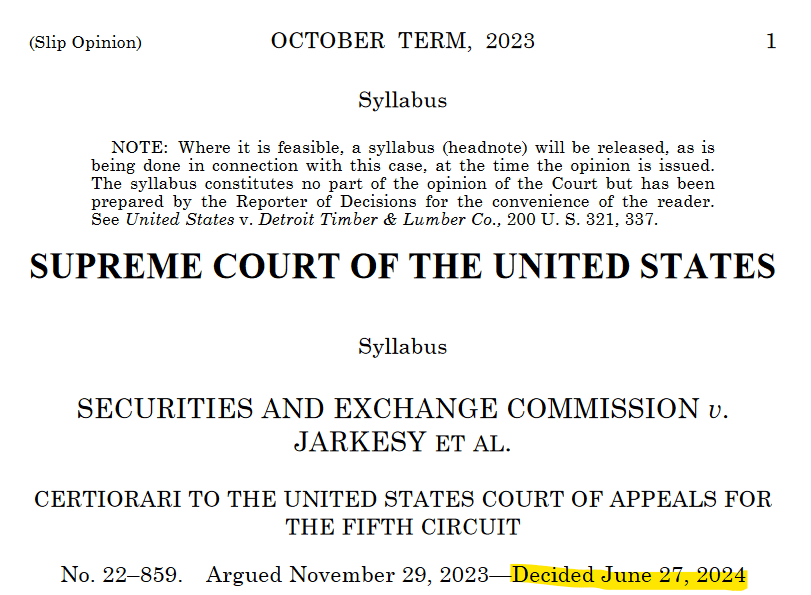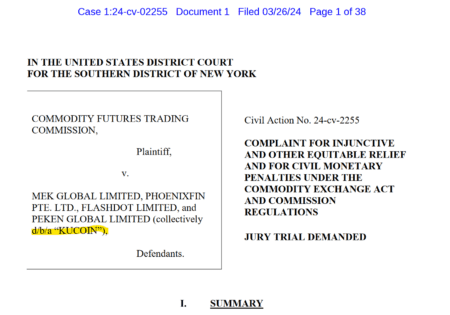In a interesting decision impacting the regulatory landscape, the U.S. Supreme Court has invalidated a principal method the U.S. Securities and Exchange Commission (SEC) employs to enforce securities fraud laws. The ruling, delivered on Thursday, declared that the SEC’s practice of using internal tribunals for enforcement actions violates the Constitution. Under the leadership of Gary Gensler, the SEC has recently been heavily criticized for its crypto activities.
The Case of George Jarkesy
The ruling centers on the case of George Jarkesy, a hedge fund manager accused of deceiving investors. The SEC initiated a civil enforcement action against Jarkesy, adjudicated by an administrative law judge (ALJ) within the agency. The ALJ ruled against Jarkesy, resulting in penalties totaling nearly $1 million, which Jarkesy subsequently appealed.
Supreme Court’s Verdict
Chief Justice John G. Roberts Jr., writing for the six-justice majority, asserted that the SEC’s use of internal tribunals infringes on the right to a jury trial. “A defendant facing a fraud suit has the right to be tried by a jury of his peers before a neutral adjudicator,” Roberts wrote. This decision underscores the constitutional guarantee of a jury trial in “suits at common law,” as protected by the Seventh Amendment.
Broader Implications and Ideological Divides
This case, Securities and Exchange Commission v. Jarkesy, No. 22-859, is part of a series of challenges this term targeting the authority of administrative agencies. Notably, last month, the Court dismissed a challenge to the Consumer Financial Protection Bureau’s funding mechanism. Additionally, the Court is poised to rule on the Chevron doctrine, a cornerstone of administrative law mandating judicial deference to agencies’ statutory interpretations.
The Debate Over Administrative Adjudications
Legal representatives for the SEC argued that juries are unnecessary in administrative proceedings since these actions aim to safeguard public rights, not to resolve private disputes. They highlighted the prevalence of agency adjudications without juries, with numerous agencies possessing similar enforcement powers.
However, the Fifth Circuit Court of Appeals previously ruled against the SEC on three grounds: the right to a jury trial, the excessive insulation of the SEC’s judges from presidential oversight, and the impermissibility of Congress allowing the SEC to determine the venue for such suits.
Hypothesis: Impact on Regulatory Enforcement
The Supreme Court’s decision could substantially alter the regulatory enforcement landscape. By curtailing the SEC’s ability to utilize internal tribunals, the ruling may compel the agency to bring more cases to federal courts, potentially straining judicial resources and altering the dynamics of securities law enforcement.
This decision may also embolden challenges against other agencies employing similar adjudicative practices, prompting a reevaluation of the administrative state’s role in enforcement. In the short term, regulated entities might face increased uncertainty as the SEC and other agencies adjust their enforcement strategies.
In conclusion, the Supreme Court’s ruling against the SEC’s administrative tribunals marks a pivotal shift in the balance between regulatory enforcement and constitutional rights, setting the stage for significant changes in how regulatory actions are prosecuted in the United States.





